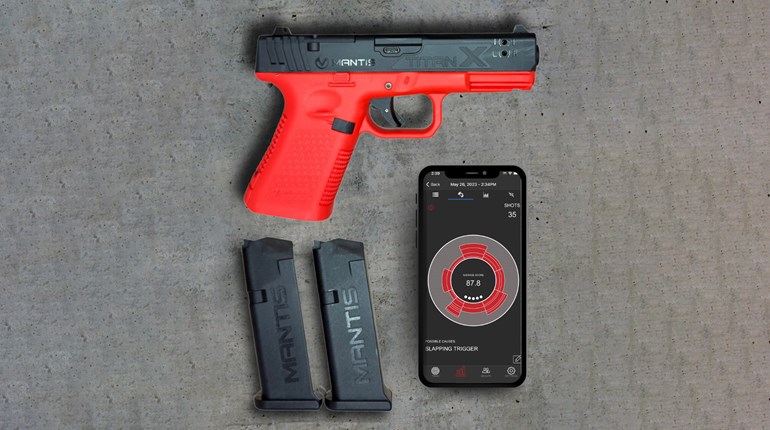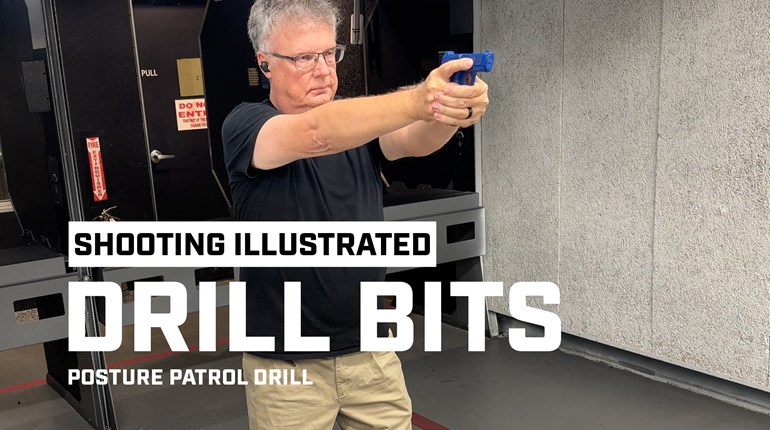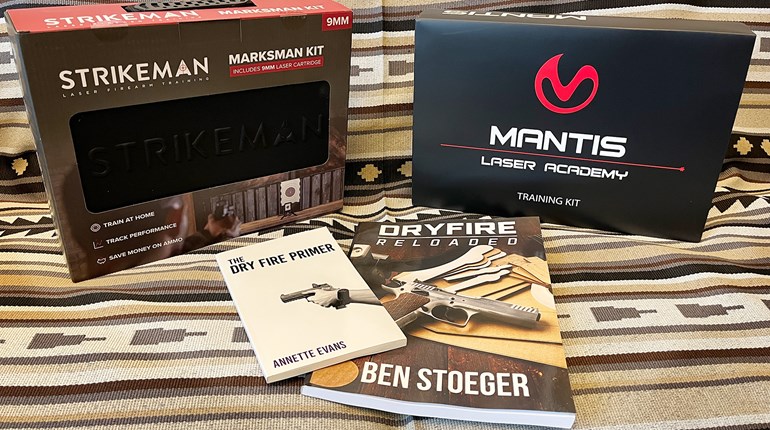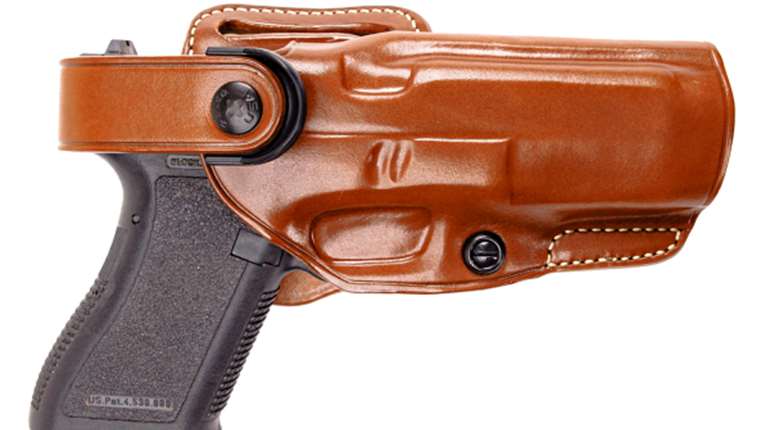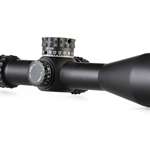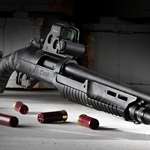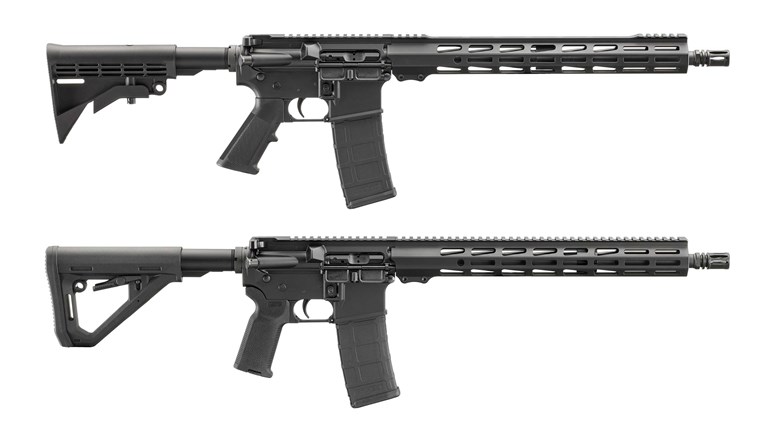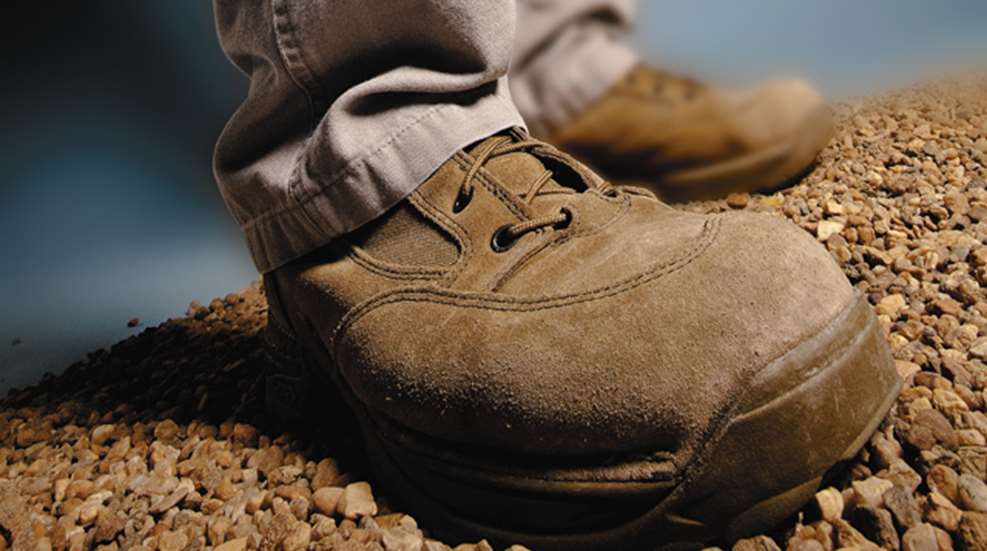
In order for any shot to be well aimed and accurate, it must be launched from a solid foundation. This is true whether you are plinking, competing in a match, hunting or trying to survive a criminal attack. At the range, you may use a bench and sandbags to steady your shots. When afield, you might rely on a tree limb, log or rock to get a solid rest and bring home the venison. However, there are times when you have to take an offhand shot without aid. In these situations, your body must become the solid foundation so critical to accurate shooting. This is why the position of your feet is so important.
In many defensive situations, shots will be fired while the shooter is standing. Therefore, a defensive-shooting foundation naturally begins with the feet. Face the target, or threat, and place your feet slightly apart—the support foot just forward of the strong-side foot. It will take a little experimenting to find what is right for you. Some shooters may spread their feet only as wide as their hips, but your feet should never be wider than your shoulders. In addition, your knees should be slightly bent with your body balanced on the balls of the feet. Otherwise, your body is erect.
Those who enjoy watching old Western movies will notice this stance is much different from the spraddle-legged gunfighter pose Matt Dillon was partial to. It is also not nearly so severe as the deep crouch adopted by the FBI in the '40s and '50s. Such crouches and posturing take too long to get into and severely limit the ability to move, should movement become necessary. And, believe me, when guns start going off, moving is a very desirable thing.
The modern combat stance is very similar to that used by boxers, martial artists, tennis pros, baseball players and other active sportsmen. This isn't an accident. It is a balanced position that makes one more difficult to knock down and, for the shooter, it allows the use of the whole body to deal with recoil.
Practicing a solid, fighting stance on a regular basis also makes getting hits on close targets in low light much easier. Now, there is really no such thing as "muscle memory." Our muscles simply don't have the ability to "remember" those positions that give desired results, but our mind does. Through regular practice, the brain instructs the body to address threats in a certain way—the same way used to put center hits on targets in good light.
Another great value of a proper fighting stance deals with movement. Too often, we get the idea that dealing with an criminal attack is going to be just like shooting at the stationary targets we use during practice. Nothing could be further from the truth. A criminal attack is a very dynamic thing. Attackers are going to be moving erratically as they approach their intended target. When the would-be victim returns fire or takes other defensive action, his attackers are really going to get into high gear. It is critical for the defensive shooter to be able to move as quickly as possible in order to address the changing threat, while still maintaining that good foundation needed to deliver accurate fire and stop the attack.
The best technique is to step in the desired direction and then make a half step with the other foot. This prevents you from bringing your feet together and getting off balance. It is also important to slide your feet instead of taking a regular step, which helps you identify obstacles without tripping. Falling off a curb or stumbling over a tricycle in the house is not conducive to accurate shooting.
Backing up is probably the most hazardous movement during a criminal attack. Generally, if you back up enough you are going to trip over something and end up flat on your back. However, there are times when you have to back up in order to acquire cover or deal with the movements of a threat. It is critical to keep your feet apart and well balanced.
Pivoting and turning are probably the most common places where you can lose balance. Without prior thought and proper practice, your feet will come together during these movements, resulting in a lack of balance and therefore ability to effectively deal with the threat. If an attack is coming from your strong side, take a short step forward and in the direction of the threat with your support-side foot, then pivot on the ball of your strong-side foot to square your body to the danger. To deal with a threat on your weak side, step with your strong-side foot and pivot on your support-side foot. Taking a short step and maintaining a wide stance are key elements.
It almost sounds like I am giving dance lessons. And that's not really far off track. Protecting your life may require as much, or even more, movement as popular dances. There is certainly more at stake. Just as in dancing, you must practice to be good. This is where dry-fire practice becomes important.
The serious defensive shooter will engage in a bit of dry-fire practice each and every day. It doesn't take but a few minutes, and the results are extremely valuable. Once you've unloaded your firearm and removed all live ammo from the immediate area, you can practice your handgun presentation. Begin by stepping into a balanced fighting stance. From there you can move to lateral movement, backward movement and turns.
After you have tuned up on the basics, it's time to increase the challenge just a bit. Practice going into a fighting stance from a sitting position or while lying down. Turn off all the lights and experience navigating through your house in the dark. You and your significant other can even up the ante by taking turns scattering unknown obstacles throughout the house.
A solid shooting foundation truly begins with the feet. Through practice, you can program yourself so that when your senses detect a criminal threat, your feet automatically move into a fighting stance. It gives a whole new meaning to the old saying, "Feet don't fail me now!"












